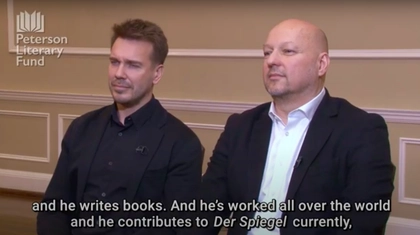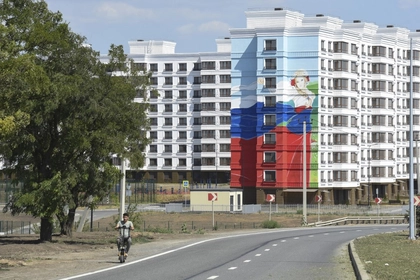Lt. Gen. Oleshchuk in a voiceover says Russian mil-bloggers claimed the Armed Forces of Ukraine (AFU) had committed an unforced security error and revealed the home base location of F-16 fighter jets becoming operational in July – inside concrete shelters at Ivano-Frankivsk air base – by mistake.
There was no immediate response to a Kyiv Post request to the Ukrainian Air Force for comment.
JOIN US ON TELEGRAM
Follow our coverage of the war on the @Kyivpost_official.
“They’re (Ukrainian F-16s) parked in standard Soviet reinforced hangers,” the pro-Russia military writer Aleksei Voevoda told his 150,000+ Telegram followers on Sunday.

“They (the Ukrainian Air Force) goofed up, they goofed up!” the popular (600,000+ followers) Voenniy Osvedomitel chortled on Monday. “But in general, this just confirms our theory that they (the AFU) will hide F-16s far away, in their most western airfields.”
Fluent in English and a charismatic speaker, Maj. Pilshchikov was a high-profile advocate in a Ukrainian government campaign to convince the White House it made sense to allow Ukraine to operate US-built F-16 fighter aircraft.

Ukrainian Naivety is Both Good and Bad
The US government opposed the transfer requested by Kyiv only days after Russia invaded, in February 2022, because of fears that were America to allow Ukraine to fly F-16s to defend itself, that might make Russia more aggressive.
Some top Pentagon officials were against arming Ukraine with the warplanes on grounds pilots like Pilshchikov lacked the skills and experience to fly a Western-designed combat aircraft.
Dozens of Pilshchikov interviews with major US media and testimony to the US Congress, along with successful testing by seasoned Ukrainian combat pilots at US Air Force F-16 International Military Training facility in Tucson, Arizona helped reverse the US government position. The White House announced Ukraine might be allowed F-16 in May 2023.
The US has donated no F-16s to Ukraine. Denmark, Norway, the Netherlands and Belgium have promised to send Ukraine about 60 of the 40-year-old jets. Ukraine’s Air Force currently operates only four to six of the aircraft because of pilot shortages.
Ukrainian President Volodymyr Zelensky in past statements has complained that Ukraine has twenty or more pilots ready to be trained on the F-16, but the US F-16 fighter pilot training program is only accepting two or four Ukrainian pilots at a time because of limited training slots and previous commitments to other allies.
Although the most updated versions of the F-16 are powerful aircraft equipped with state-of-the-art radars and missiles, the F-16s donated to Ukraine by European states no longer using them are fitted with electronics dating back to the late 1990s and early 2000s. This is approximately the equivalent of the F-16s currently operated by the USAF that are being replaced by F-35s.

In the years leading up to delivery of Ukraine’s first F-16 fighters, Ukrainian media and military analysts had widely predicted that were Kyiv ever to receive modern combat aircraft from its allies, they almost certainly would be placed as far away as possible from Russia and Russian missiles.
Located some 700 kilometers from the nearest potential firing sites in Russia, the Ivano-Frankivsk airfield is outside the range of Russian tactical missiles like the Iskander-K, but within the range of cruise and some ballistic missile used by the Kremlin.
You can also highlight the text and press Ctrl + Enter






